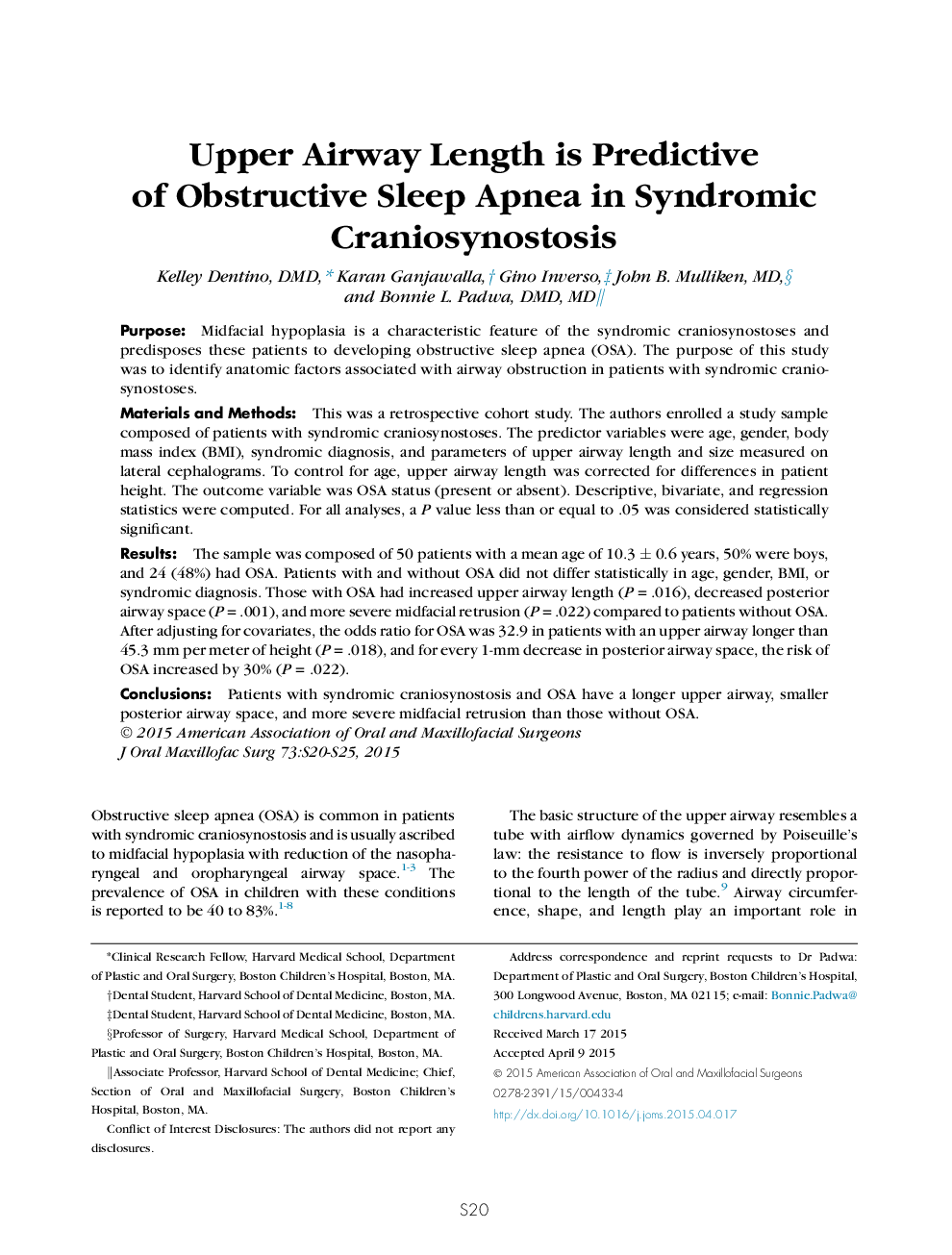| کد مقاله | کد نشریه | سال انتشار | مقاله انگلیسی | نسخه تمام متن |
|---|---|---|---|---|
| 3152115 | 1197998 | 2015 | 6 صفحه PDF | دانلود رایگان |
PurposeMidfacial hypoplasia is a characteristic feature of the syndromic craniosynostoses and predisposes these patients to developing obstructive sleep apnea (OSA). The purpose of this study was to identify anatomic factors associated with airway obstruction in patients with syndromic craniosynostoses.Materials and MethodsThis was a retrospective cohort study. The authors enrolled a study sample composed of patients with syndromic craniosynostoses. The predictor variables were age, gender, body mass index (BMI), syndromic diagnosis, and parameters of upper airway length and size measured on lateral cephalograms. To control for age, upper airway length was corrected for differences in patient height. The outcome variable was OSA status (present or absent). Descriptive, bivariate, and regression statistics were computed. For all analyses, a P value less than or equal to .05 was considered statistically significant.ResultsThe sample was composed of 50 patients with a mean age of 10.3 ± 0.6 years, 50% were boys, and 24 (48%) had OSA. Patients with and without OSA did not differ statistically in age, gender, BMI, or syndromic diagnosis. Those with OSA had increased upper airway length (P = .016), decreased posterior airway space (P = .001), and more severe midfacial retrusion (P = .022) compared to patients without OSA. After adjusting for covariates, the odds ratio for OSA was 32.9 in patients with an upper airway longer than 45.3 mm per meter of height (P = .018), and for every 1-mm decrease in posterior airway space, the risk of OSA increased by 30% (P = .022).ConclusionsPatients with syndromic craniosynostosis and OSA have a longer upper airway, smaller posterior airway space, and more severe midfacial retrusion than those without OSA.
Journal: Journal of Oral and Maxillofacial Surgery - Volume 73, Issue 12, Supplement, December 2015, Pages S20–S25
